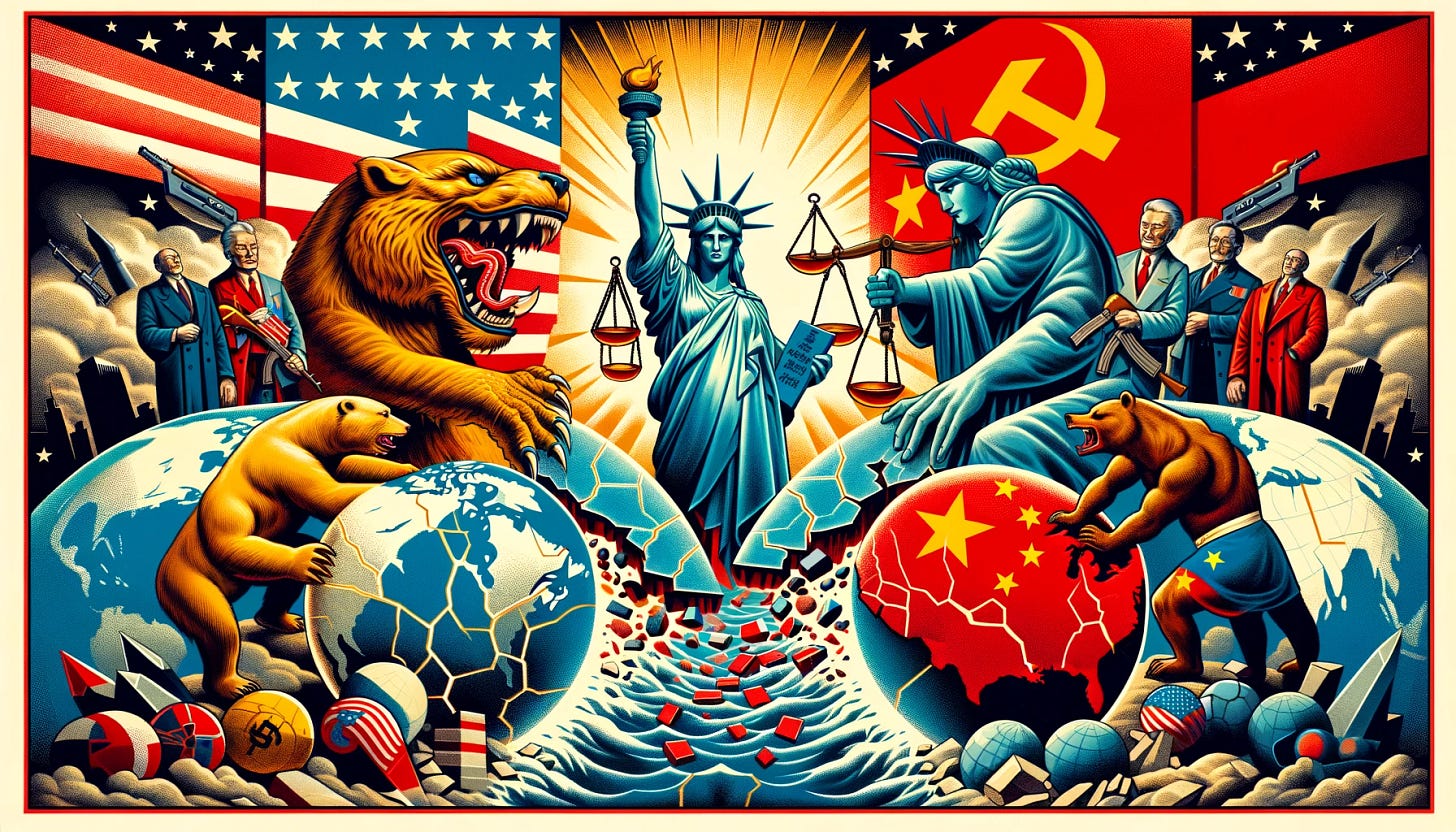Geoeconomic Fragmentation and the Emergence of New Connector Countries
Rewiring Globalization: How Connector Countries, and the UAE in particular, are Reshaping the Future of Trade and Technology
The world is witnessing a profound shift in the global economic order, driven by the forces of geoeconomic fragmentation (GEF). As trade tensions escalate and geopolitical rivalries intensify, the once seemingly inexorable march of globalization has given way to a new era of economic realignment. The United States and China, the world's two largest economies, find themselves at the epicenter of this tectonic shift, as they seek to decouple their deeply intertwined supply chains and assert their technological primacy. Yet, as the old order crumbles, new opportunities arise for countries that can navigate the fault lines of this fractured landscape and emerge as the connective tissue of the 21st-century global economy.
The evidence of GEF is mounting, even if the headline numbers on global trade and investment flows have not yet reflected a sharp decline. Underneath the surface, a "great reallocation" is underway, as companies rethink their supply chains and governments erect new barriers to trade and investment (Alfaro and Chor, 2023). The share of bilateral trade between geopolitically distant countries has started to decline relative to trade within allied blocs, a trend that has accelerated since the onset of the Russia-Ukraine war (Gopinath et al., 2024). The countries caught in the middle of this decoupling, however, face a new set of opportunities and risks.
During the Cold War era, the global economy was neatly divided into two rival blocs, with little room for maneuver for the nonaligned countries. Trade between the Western and Eastern blocs declined precipitously, while trade with nonaligned economies remained limited. In contrast, the current wave of GEF is unfolding in a much more integrated global economy, with complex supply chains and interdependencies that defy simple bifurcation. As a result, we are seeing the emergence of a new category of "connector" countries that are stepping in to bridge the gaps between the rival blocs (Freund et al., 2023).
These connector countries, such as Vietnam and Mexico, are benefiting from the reallocation of trade and investment flows away from China and toward more politically aligned partners. As Gopinath et al. (2024) show, the countries that have gained the most in U.S. import market share are also the ones that have seen the biggest increases in Chinese exports and outward foreign direct investment. This suggests that even as the direct links between the U.S. and China are severed, indirect ties via third countries are being strengthened.
However, the ability of connector countries to play this role is not unlimited, particularly when it comes to the flow of talent and advanced technologies. As concerns over national security and technological rivalry intensify, the barriers to the diffusion of cutting-edge technologies across borders are likely to grow. Export controls, investment screening mechanisms, and visa restrictions are already being deployed to prevent sensitive technologies from falling into the hands of geopolitical rivals. In this context, the countries that can position themselves as trusted intermediaries for the flow of talent and technology will have a unique advantage.
Enter the United Arab Emirates (UAE), a small but strategically located country that has long punched above its weight in the global economy. With its business-friendly policies, open economy, and neutral foreign policy stance, the UAE is well-positioned to emerge as a key connector country in the era of GEF. The UAE's leadership has made no secret of its ambitions to become a global hub for innovation and technology, investing heavily in emerging sectors such as artificial intelligence, blockchain, and space exploration.
What sets the UAE apart from other potential connector countries is its ability to attract and retain global talent. Through initiatives such as long-term golden visas and reforms to its citizenship laws, the UAE has made itself an attractive destination for highly skilled workers from around the world. This talent pool, combined with the UAE's strategic location and strong ties to major global economies, could make it a natural hub for the diffusion of advanced technologies.
Of course, the UAE is not without its limitations. Its relatively small domestic market and dependence on foreign talent could make it vulnerable to shifts in the global competition for skills. Its location in a volatile region also poses geopolitical risks that could deter some firms from locating sensitive R&D activities there. Nevertheless, the UAE's unique combination of strengths gives it a real shot at carving out a niche as a connector country for talent and technology flows.
As the world enters a new era of geoeconomic fragmentation, the countries that can adapt to the changing landscape and find ways to bridge the gaps between rival blocs will be the ones that thrive. Traditional trade and financial flows are already being realigned, but the next frontier will be the battle over talent and technology. In this context, the emergence of new connector countries like the UAE could be a defining feature of the 21st-century global economy. By providing a trusted platform for the exchange of ideas and innovations across borders, these countries could help to mitigate the worst effects of GEF and keep the flame of global cooperation alive. As policymakers and business leaders navigate this brave new world, they would do well to keep a close eye on the evolving role of connector countries in shaping the future of globalization.
References: Alfaro, L., & Chor, D. (2023). Global Supply Chains: The Looming "Great Reallocation". NBER Working Paper 31661.
Freund, C., Mattoo, A., Mulabdic, A., & Ruta, M. (2023). Is US Trade Policy Reshaping Global Supply Chains? World Bank Policy Research Working Paper 10593.
Gopinath, G., Gourinchas, P. O., Presbitero, A. F., & Topalova, P. (2024). Changing Global Linkages: A New Cold War? CEPR Discussion Paper DP18997.


